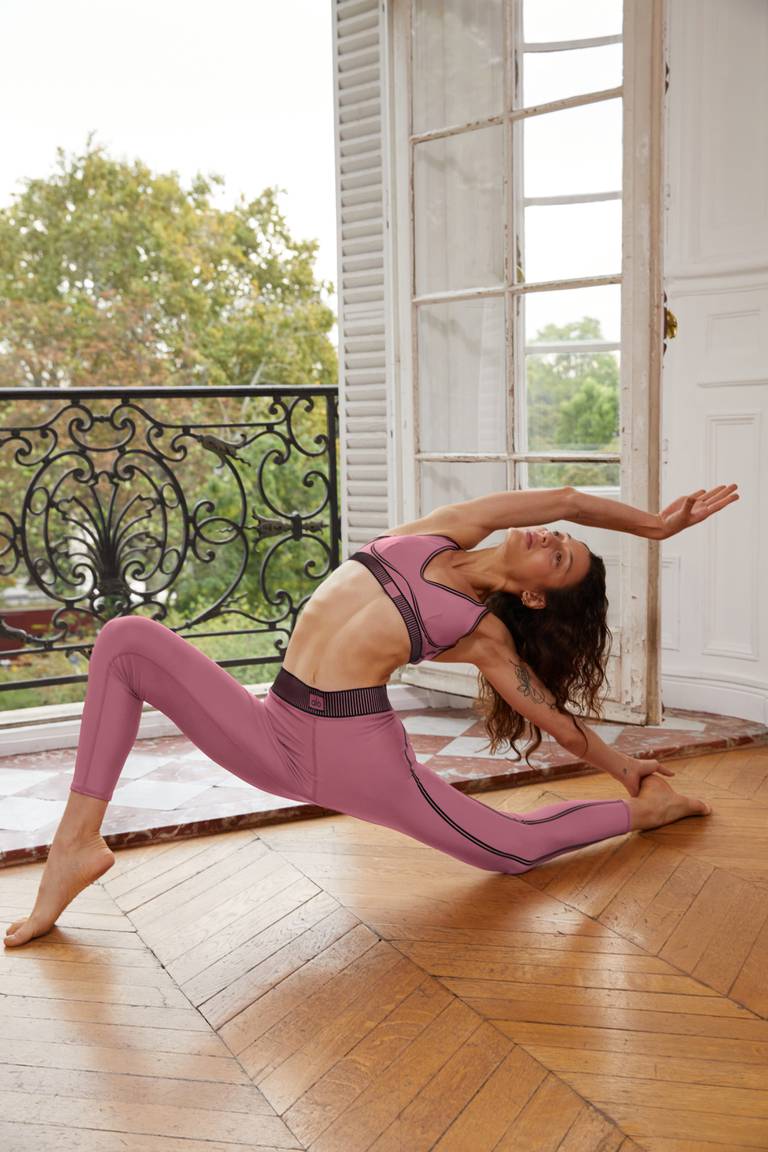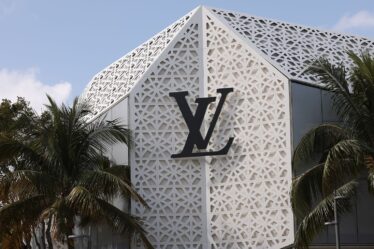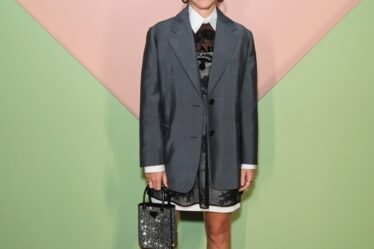
It’s a good time to be Alo Yoga.
The 16-year-old brand, known for its Airbrush leggings and a wide variety of crop tops, has long been the fashionable upstart in an athleisure category dominated — and arguably invented by — Lululemon. But the retail giant is suddenly looking vulnerable. It downgraded its profit forecast in January, prompting Bernstein analyst Aneesha Sherman to downgrade her outlook for the company, saying it was due for a “reality check.”
Lululemon still has size on its side: it has nearly 500 brick-and-mortar locations and nearly $8 billion in revenue last year, to Alo’s 34 stores and $200 million in sales in 2020, the most recent year the company has released financials. It’s got a lock on the mainstream customer. But it’s Alo that has the cool factor — Bella Hadid, Kaia Gerber and Justin Bieber wear the brand, which debuted a ski collection at New York Fashion Week last fall and has a virtual “sanctuary” on Roblox.
And with a new, post-pandemic chapter for activewear in its opening stages, cool matters, analysts say.
“As any dominant brand becomes more ubiquitous, its early adopters will look elsewhere,” said Simeon Siegel, managing director and senior analyst at BMO Capital Markets. “Brands like Alo are waiting there with open arms.”
Alo has big plans to meet the moment. Well before Lululemon’s sales growth began to slow, the Los Angeles-based brand had made plans to more than double its store count this year, including expanding internationally (the brand has four stores in the Middle East, with more openings planned in Malaysia, Mexico and Thailand). Where most existing brick-and-mortar locations are in California, New York, or wealthy enclaves like Aspen, the goal of this next retail push is to make Alo an omnipresent sight across the US, and eventually, the world.
“Basketball or American football is not a global sport, but mindfulness and wellness is a global concern,” said Danny Harris, Alo Yoga’s co-founder, owner and CEO. “In fashion, that appeals globally.”
Alo may have carved a niche for itself with the coastal boutique fitness set, but global domination is another matter. Lululemon’s growth is slowing, but it’s not going anywhere. Demand for athleisure remains strong, but isn’t booming like it did in the first two years of the pandemic. August through November 2020, Alo saw over 200 percent year-over-year growth from 2019, and has continued with either triple-digit or high two-digit growth since. In December 2022, the brand saw 56 percent year-over-year growth, according to Earnest Analytics.
In a fractured market with many competitors, the most likely scenario is that no single company comes out on top.
“The future of the market is lots of different brands that appeal to different cohorts,” said Jason Goldberg, chief commerce officer at ad giant Publicis. “Alo has a terrific example to be one of the leaders in that new model, but it’s just not at the same scale as everybody wearing the exact same yoga pants.”
Studio to Street
Alo — which stands for air, land and ocean — was founded in 2007 by close friends Harris and Marco DeGeorge, who remain co-owners and co-CEOs. Both had found solace in yoga in coping with different ailments — DeGeorge was recovering from a back injury, Harris was dealing with anxiety.
That idea of harnessing yoga’s restorative powers, particularly around mindfulness, though not exactly revolutionary, helped define the brand in consumers’ minds. It continues to play a major role: its stores, for example, are called “sanctuaries.”
Also key was a fashion-forward approach. Wellness was already becoming ubiquitous among the fashion and beauty sets when Alo launched (Gwyneth Paltrow founded Goop a year later). Alo helped cement the connection, and was also quick to pick up on the “studio to street,” Los Angeles-centric approach to yoga culture.
“We didn’t want it to feel like we were so granola,” said Harris. “We wanted to give it more of a street edge.”
Yes, Alo carries plenty of crop tops and sports bras that would be just as at home at a cocktail bar than in a workout studio. But it’s also made an effort to align itself with a more high-fashion crowd beyond product. Alo’s inked high-profile partnerships outside of the fitness space, casting stars like Kendall Jenner in ads. It launched skin care — the Alo Glow System — in December 2020, and in September 2021, it announced it would serve as the first official “wellness partner” for New York Fashion Week, hosting yoga classes and a sound bath at Spring Studios, where many shows are held, as well as offering aura photos and astrology readings for attendees. It reprised that role in 2022.
“It’s layering something appealing on top of a model that already worked,” said Goldberg. “What Alo is doing is taking the comfort and utility of that model, and then adding visual distinctiveness and aspirational branding that says something about you when you wear it.”
What’s Next
Alo’s also hopped on fashion-friendly tech trends. It allows customers to make purchases in cryptocurrency, and in June said it would give some employees the option to be paid in crypto. The brand hosts meditation sessions and yoga classes in the metaverse. Some of its higher-priced items, like its Aspen ski collection, come with a digital version of the garment.
“There’s a lot of benefit in creating these experiences, because it drives loyalty and excitement for an item, which of course translates in sales,” said Angelic Vendette, Alo Yoga’s global head of marketing. “But then it also creates a bonding experience between our brand and our community.”
It’s also another way to connect with luxury consumers. Alo’s price point is comparable to Lululemon’s: a pair of leggings can run from $98 to $138, at Lululemon it’s $98 to $128. Offering experiences, like its Alo Wellness clubs, which host yoga classes and light spa treatments, new additions like a private client manager, or teaming up with wholesale partners like the Shop at Equinox, serve as a differentiator.
Though Alo still has yoga in its name, it now offers apparel for activities that may appeal to a similarly-minded consumer, such as tennis and ski. Soon to come is a footwear collection, Harris said.
Despite the crowded market, there’s no denying that Alo has built something that resonates with a crowd that wields serious trend-setting power. And there’s an appetite for more. Beyond brick-and-mortar expansion, the brand also has its sights set on solidifying its presence around the globe. Alo currently ships all over the world, but only operates three stores outside the US, and most of its locations are in coastal cities or other major metropolitan areas.
“I was in Dubai, and I would say I saw more Alo bags than I saw Chanel bags, and we don’t have a store in Dubai.” said Harris. “Perhaps we are the brand for the next generation.”



